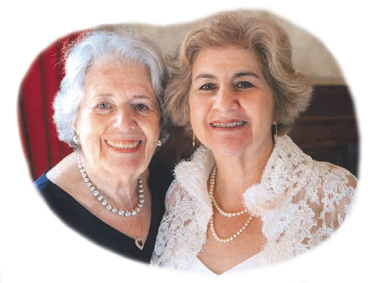In the Spotlight: A mother's experience with dementia inspires her daughter's play.

Published in the magazine: Brain and Life: June/July 2025
I miss my mother, Miriam Gemson, in many ways. Eating store-bought strawberry shortcake, for instance, can't compare to her homemade treat. I recall her joy as a history teacher, an archery instructor, and a community activist. After spending her married life in Valley Stream, NY, a quiet suburb an hour from New York City, at 75, she moved to Manhattan and worked part-time as an anti-bullying facilitator in city schools. She loved the work and her new urban life.
Within a year of her move to New York's Upper West Side, I noted her confusion about time, place, and person. She called me daily, frantic, fearful, and frightened—different from her former upbeat presence. Following a careful neurologic assessment, she received the dreaded diagnosis: dementia.
After more than 10 years in New York City, my mother moved again. Living alone had grown unsafe for her, so my husband and I agreed that she should move to an assisted-living facility in Florida, near her beloved brother, and enjoy the warm weather. We visited her every other month. Just a year later, though, after her brother's death, she returned to New York City, moving into an Upper East Side nursing home for hospice care. During her final month, my mother, by then 94 years old, said goodbye to friends and family.
Almost five years later, I wanted to commemorate the feisty spirit present in much of my mother's earlier life. The solution? I'd write a play for Working Theater, a professional theater company. I enrolled in four free playwriting classes sponsored by this small theater that produced plays about working people, their stories, and their struggles. My colleagues in class included a doorman, porter, real estate agent, college professor, airport ramp agent, and psychologist. I was the lone social worker in the group.
We each created a 10- to 12-minute play in this collective setting. Our animated and supportive director encouraged us to develop conflict and realistic characters in our work. We revised, edited, and revised again. Some chose to focus on humor. Others conveyed sadness.
My work—my fourth play produced by this group—was a fictionalized account of my mother's last years. I invented a character named Lena, who was a retired teacher. I depicted her transition from her suburban home to her first time living alone as well as her relationship with her idealist daughter, a social worker named Carol who represented me.
Conveying the sad decline in the character my mother inspired, scenes show ice cream pops being found on Lena's closet floor and a refrigerator that contains only milk and orange juice. Later in the play, Lena and Carol visit a neurologist, who shares the news of Lena's dementia diagnosis and recommends medication. But in the final scene, Lena declares she does not need the pills and throws them down the sink, leaving the audience wondering what will happen next.
Dec. 15 was the big day when professional actors performed our brief plays at a community theater. Friends, family, and community residents packed the place. They were a supportive and enthusiastic audience, and I found it comforting to have my mother's life fictionalized and the reality of dementia acknowledged.
My next challenge was to expand the play beyond 10 pages. The story grew to include an understanding of Lena's vibrant past and present, her history of dementia, and the care home health aides provided.
Unlike many tales about memory loss with angry families and bitter fights, my play shows hope, understanding, and awareness of family struggles and commitment. I believe it was helpful for others to know about the value of medical care and the importance of family in seeking alternatives and providing support. While I felt a sense of poignancy and loss when I saw my play staged, writing it made me feel closer to my mother and appreciative of her warmth and compassion.
Constance H. Gemson has worked as an adjunct college lecturer, hospice social worker, and playwright. She lives in New York City.